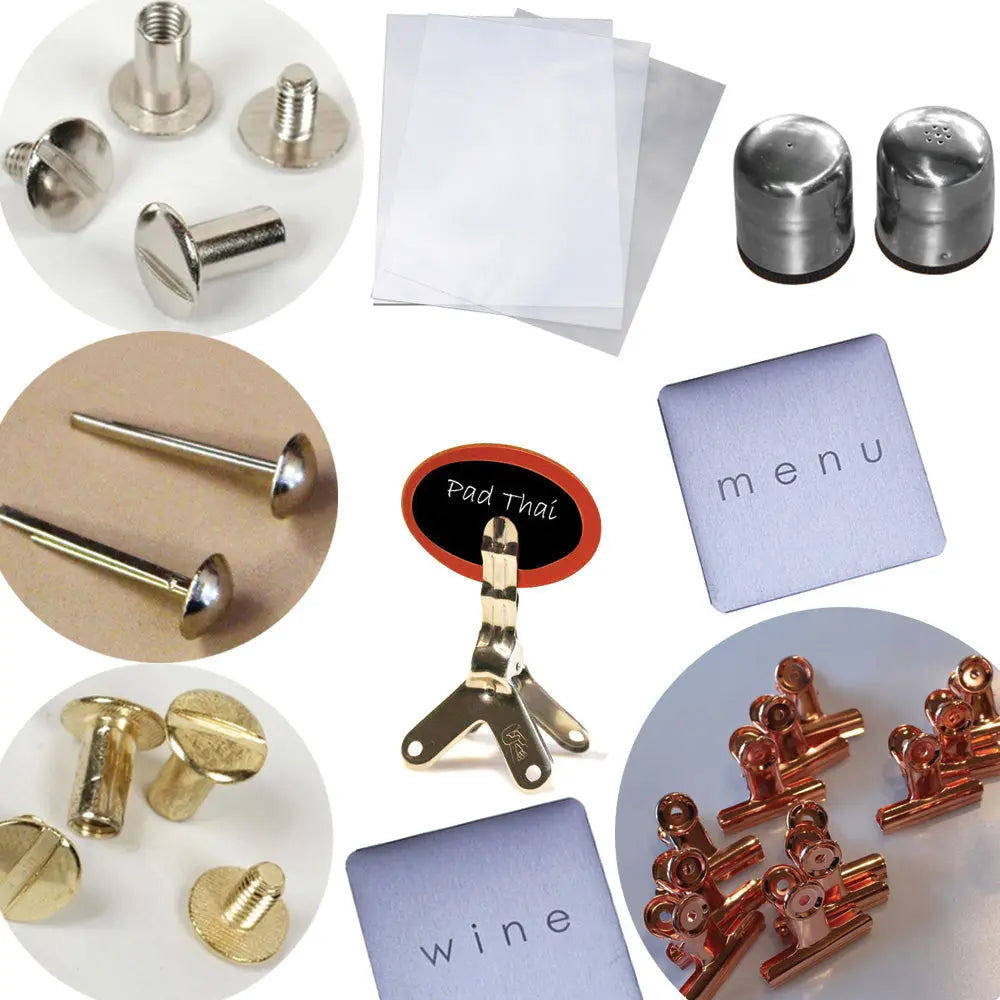
Caring and cleaning tips for your Menu Covers: Maintenance & Durability Tips
Your restaurant's menu covers are not just functional tools; they're an essential part of your establishment's aesthetic appeal and branding. To ensure they remain pristine and last longer, proper care and maintenance are crucial. Whether you're using leather, vegan leather, or other materials, these tips will help you extend the lifespan of your menu covers and keep them looking their best.
- Choosing Durable Materials for Longevity
The foundation of a menu covers' durability begins with your material choice. Opt for materials known for their resilience and resistance to wear. Durable options like synthetic leather, faux leather, or recycled materials not only look great but also stand up well to daily use. Reinforced Corners such as in our Bistro range are less likely to fray or tear over time, especially with frequent use.
- Regular Cleaning Keeps Covers Fresh
Regular cleaning is key to preserving the appearance of your menu covers. Dust, spills, and grease can accumulate over time, leading to discoloration and damage. Depending on the material, use these cleaning tips:
- Synthetic/Vegan Leather: Wipe down with a damp, soft cloth and mild soap. Avoid abrasive cleaners or excessive moisture that could harm the material.
- Recycled Materials: Gently brush off debris and wipe with a slightly damp cloth. Avoid using harsh chemicals that could compromise the material's integrity.
- Vinyl or Plastic Menu Covers:
- Wipe with a soft, damp cloth to remove dust and debris.
- For stubborn stains, use a mild soap solution and gently wipe the surface.
- Avoid using abrasive cleaners, as they can scratch the surface.
- Tuscan Leather Menu Covers:
- Dust off the covers using a soft, dry cloth.
- Do not use a chemical cleaner as our Tuscan leather is coated both sides with a coating to ensure they can be wiped using a damp cloth. For our genuine hide covers use a leather conditioner periodically to prevent the leather from drying out and cracking.
- If spills occur, blot gently with a clean cloth to absorb the liquid.
- Fabric or Cloth Menu Covers:
- Vacuum the covers with a brush attachment to remove dust and crumbs.
- Spot clean using a mild fabric cleaner and a clean cloth.
- Avoid saturating the fabric with water to prevent damage.
- Immediate Stain Management
Accidents happen, and spills are inevitable. The key is addressing stains promptly to prevent permanent damage. Blot spills with a clean, absorbent cloth, and avoid rubbing, as it can push the stain deeper into the material.
- Storage Recommendations
When not in use, proper storage protects your menu covers from dust and potential damage. Here's how to store them effectively:
- Avoid Sunlight Exposure: Prolonged exposure to direct sunlight can cause fading and material deterioration. The best materials for outdoor use is polypropylene which we use specifically in our EKO range. Made of recycled materials it is strong, non absorbant and not prone to fading. For other materials store your menu covers in a shaded area or use protective covers.
- Flat Storage: Store menu covers flat to prevent warping or bending. If that's not possible due to space constraints, ensure they're stacked gently and evenly.
- Storage Box: All our menu covers fit our walnut or black timber storage box. They can stand vertically, take up less room and are protected from accidents.
- Keep Away from Heat Sources: High heat can cause materials to become brittle or warp. Store menu covers away from heaters, stoves, or other sources of heat.
- Preventive Measures
Purchasing covers with replaceable components ensure your menu covers always look fresh, clean, and new. All FCM covers components are available for purchase individually in our Spare Parts section of our website.
- Menu Inserts: Consider using clear, protective inserts for your menus. These inserts shield the actual menu covers from food spills and handling, reducing wear and tear.
- Regular Inspections: Routinely inspect your menu covers for signs of wear, loose stitching, or any damage. Perhaps ensure you have a few extra components on hand for prompt repairs.
Early detection allows for timely repairs, preventing more significant issues and taking preventive steps can significantly extend the life of your menu covers.
By following these care and maintenance tips and integrating them into your restaurant's routine, you'll not only ensure the longevity of your menu covers but also enhance the overall dining experience for your customers. A well-maintained menu cover reflects the care and attention to detail you invest in every aspect of your restaurant.
